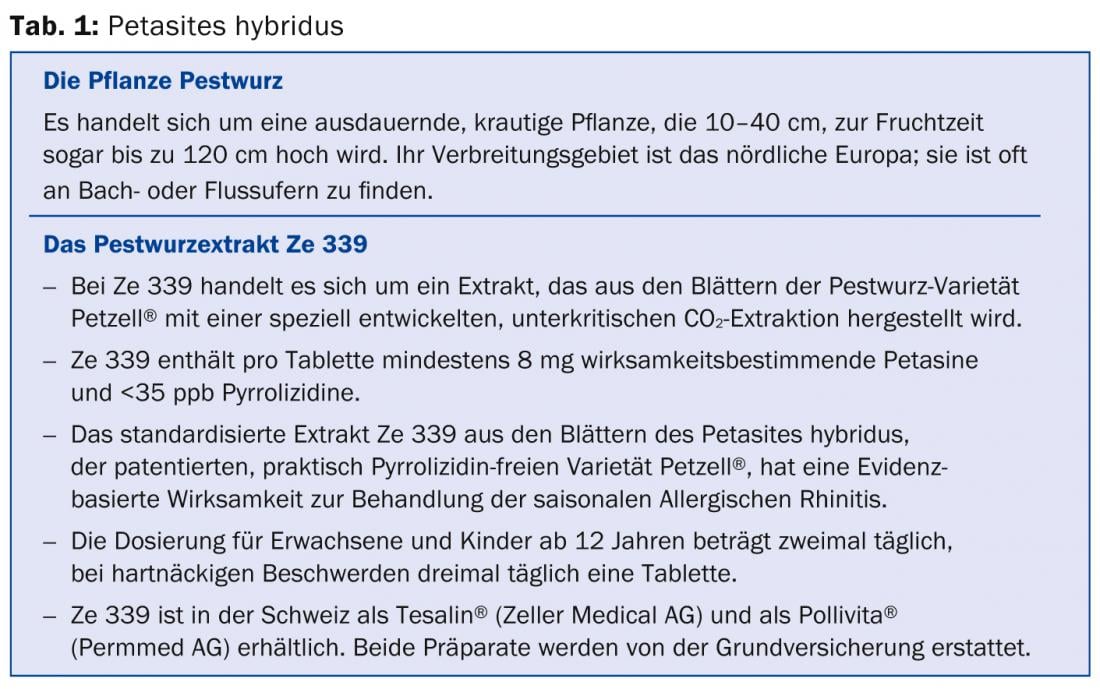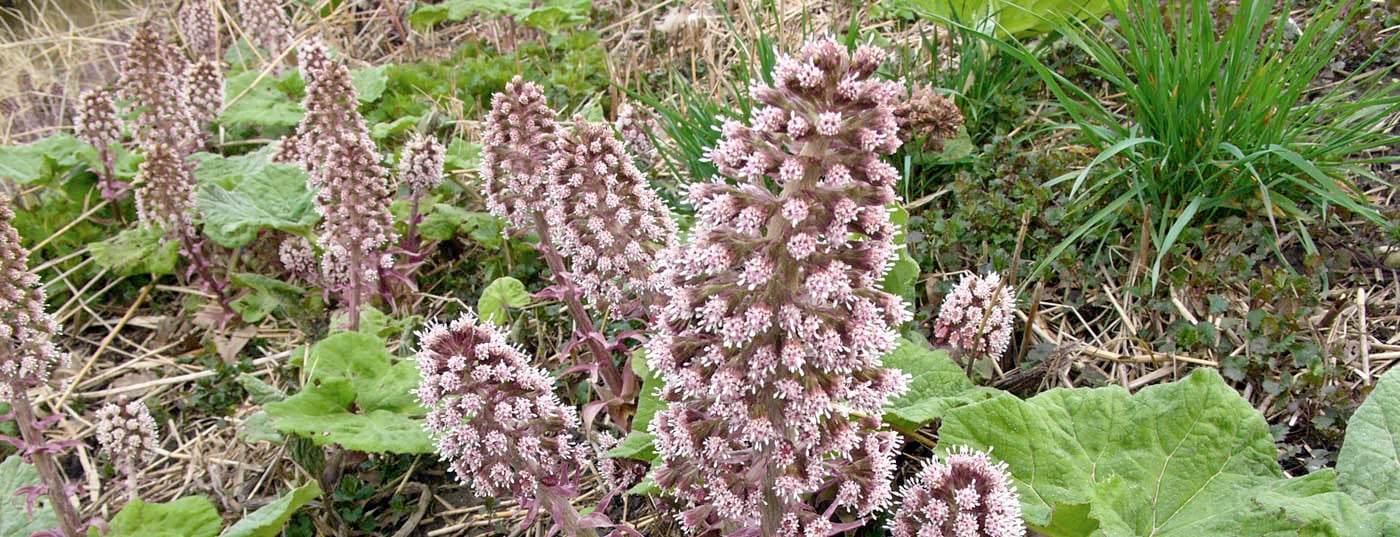In medicine, too, coincidence sometimes helps: employees of a pharmaceutical company took a butterbur preparation from their company for headaches and as a result suddenly noticed much fewer hay fever symptoms. Subsequently, scientists from the company reexamined the extract and were able to scientifically prove the empirically experienced efficacy against seasonal allergic rhinitis. This resulted in the butterbur extract Ze 339.
Seasonal allergic rhinoconjunctivitis, also known as hay fever, is a genetic condition with an increasing prevalence in the Western Hemisphere. Triggering allergens are plant pollen from trees, herbs and grasses. There are patients who are allergic to only one type of pollen, while others develop an allergy to a whole range of pollens and therefore suffer from the familiar symptoms such as nasal secretion, sneezing, redness, lacrimation and itching in various body cavities for a significantly longer period of time. The quality of life of affected patients is significantly reduced during the pollen season. This is complicated by the fact that, especially for the second group, avoidance of pollen exposure is hardly feasible. Therefore, pharmacotherapy, consisting primarily of treatment with antihistamines, is the obvious choice.
Butterbur, Petasites hybridus
Butterbur (Fig. 1) was used as a medicinal plant in ancient times, Dioscorides used it against ulcers. The plant received its German name in the Middle Ages, where it was used to treat the plague. Later, doctors prescribed butterbur for coughs and asthma, then also for colic and migraines.

Due to the liver-toxic effects of the pyrrolizidine alkaloids, naturally grown butterbur has been banned from the list of medicinal plants. However, there is a patent-protected butterbur variety called Petzell® from which the butterbur extract Ze 339 is produced (Table 1).

Effectiveness of Ze 339
Pharmacologically, Ze 339 has been shown to inhibit the biosynthesis of leukotrienes as well as the disposition of calcium ions in cells and stabilize mast cells, which halts the release of inflammatory mediators such as histamine [1].
Ze 339 was first reviewed in an open-label study with only six subjects using a daily dose of 3×2 tablets [2], which corresponds to 48 mg of petasin. Good efficacy was demonstrated here, and the subjects’ symptoms and quality of life improved decisively.
Additional clinical trials have since been conducted to evaluate the efficacy of Ze 339 against either comparators or placebo.
Ze 339 versus cetirizine: In a randomized, double-blind, prospective, controlled multicenter study of 131 patients, Ze 339 was compared with cetirizine [3]. The primary endpoint was the change in Medical Outcome Health Survey Questionnaire (SF-36) score. The results showed that Ze 339 was not inferior to cetirizine.
Ze 339 versus placebo: Again, this was a randomized, double-blind, prospective, placebo-controlled multicenter trial testing two different Ze 339 doses versus placebo [4]. Subjects in the verum group were administered one tablet of Ze 339 either two or three times daily. Both butterbur doses were significantly superior compared with placebo. Also significantly superior was the stronger Ze-339 dose compared with the weaker one.
Further studies [5] confirmed the results found as well as the good tolerability [6]. For the time being, the last publication on the product was a study [7] in 2011 comparing Ze 339 with the antihistamine desloratadine. In this three-arm study, 18 patients were pretreated with either Ze 339, desloratadine, or placebo for five days prior to grass pollen exposure. In the Ze-339 group, symptoms calmed significantly faster after exposure than in the placebo group (p=0.027), but also faster than in the desloratadine group (p=0.030).
Literature:
- Thomet OAR, et al: Role of petasin in the potential anti-inflammatory activity of a plant extract of petasites hybridus. Biochem Pharmacol 2001; 61: 1041-1047.
- Thomet OAR, et al: Antiinflammatory activity of an extract of Petasites hybridus in allergic rhinitis. International Immunopharmacol 2002; 2: 997-1006.
- Schapowal A: On behalf of Petasites study group: Randomised controlled trial of butterbur and cetirizine for treating seasonal allergic rhinitis. BMJ 2002; 324: 144-146.
- Schapowal A: On behalf of Petasites study group: Butterbur Ze 339 for the treatment of allergic rhinitis (“hay fever”): dose-dependent efficacy in a prospective, randomised, double-blind, placebo-controlled study. Allergy 2003; 58 (Suppl 74): 286-287.
- Schapowal A: On behalf of Petasites study group: Treating intermittent allergic rhinitis: a prospective, randomized, placebo and antihistaminic-controlled study of Butterbur extract Ze 339, Phytother Res 2005(6); 19: 530-537.
- Käufeler R: Efficacy and safety of butterbur herbal extract Ze 339 in seasonal allergic rhinitis: postmarketing surveillance study, Adv Ther 2006(2); 23: 373-384.
- Dumitr AF, et al: Petasol butenoate complex (Ze339) relieves allergic rhinitis-induced nasal obstruction more effectively than desloratadine, J Allergy Clin Immunol 2001 (6); 127: 1515-1521.
HAUSARZT PRAXIS 2014; 9(2): 7











